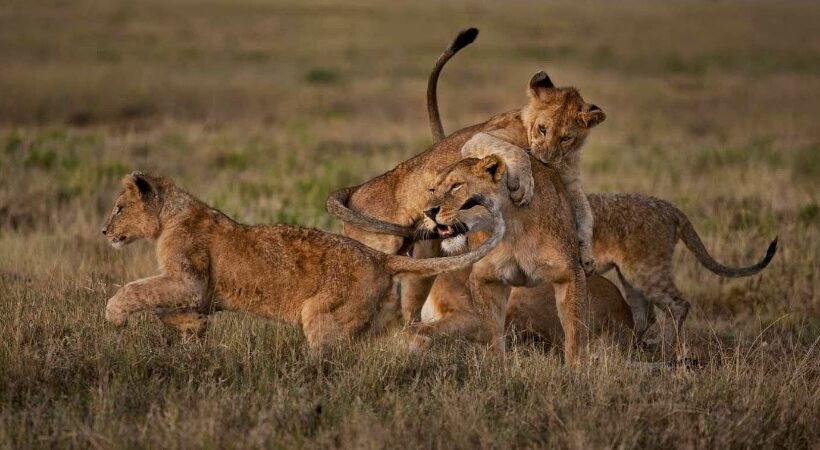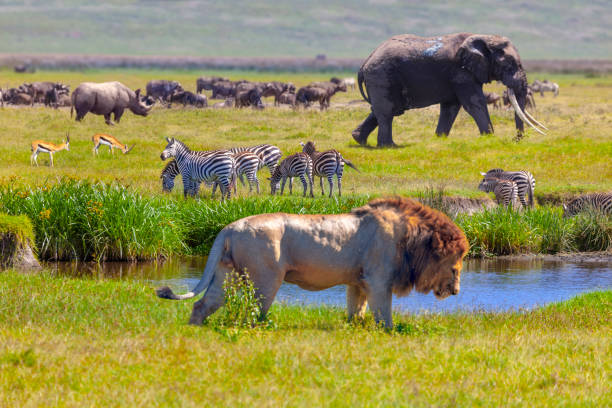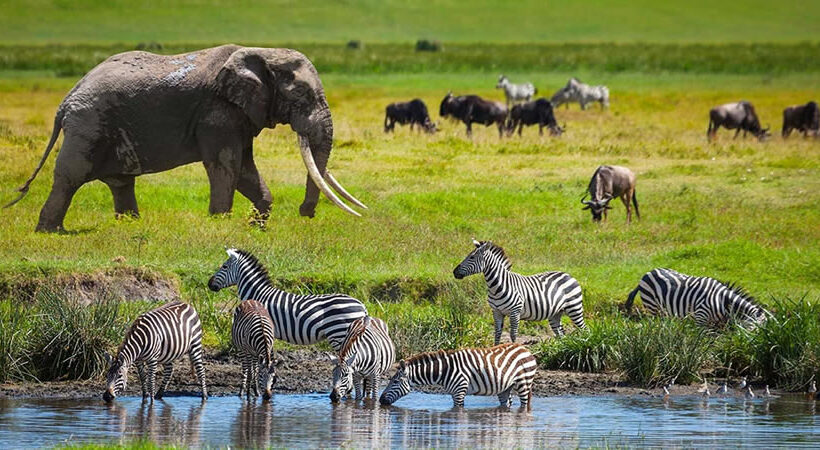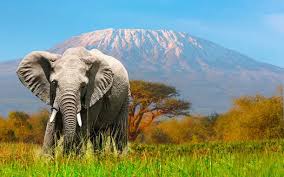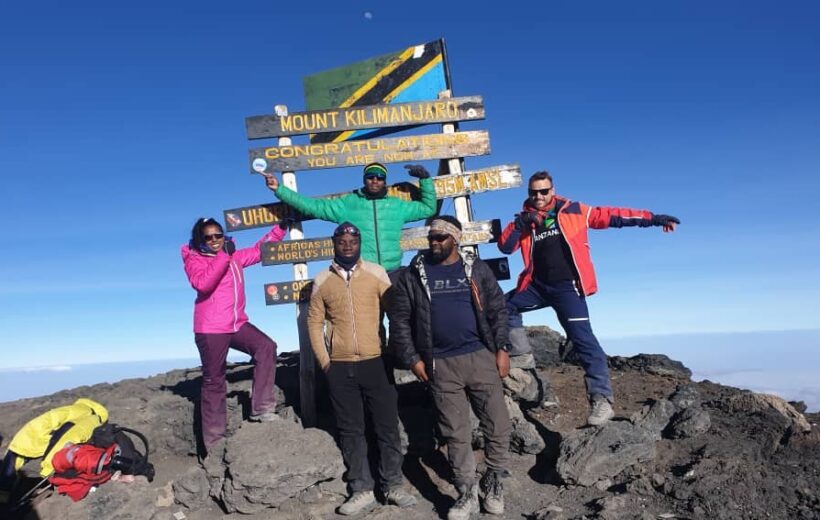- +1 (255)-677-040-011
- info@mercyyetusafaris.com
- Arusha, Tanzania
Serengeti National Park
Serengeti National Park: Where the Wilderness Roars with Life
Serengeti National Park, located in Tanzania, is a vast expanse of untamed beauty that serves as a sanctuary for some of the most incredible wildlife on Earth. Renowned for its annual Great Migration, where millions of wildebeest and other herbivores traverse the plains in search of fresh grazing, the park offers a front-row seat to the circle of life in the animal kingdom. The Serengeti is home to diverse ecosystems, from expansive grasslands to dense woodlands, providing habitats for a rich array of species, including the Big Five—lion, leopard, elephant, buffalo, and rhinoceros. Visitors to this iconic park witness nature's grandeur, as predators and prey coexist in a delicate balance, making Serengeti National Park a must-visit destination for those seeking a truly immersive and unforgettable safari experience.
About the
Serengeti National Park
Established as a Park in 1951, Serengeti was Tanzania’s first National Park. It is designated as a UNESCO World Heritage site and attracts over 350,000 visitors annually. The name derives from the Maasai word ‘siringet’, which means ‘the place where the land runs on forever’.
The Serengeti is well-known for its outstanding beauty and wildlife safaris. Its main attractions are:
- The annual wildebeest migration
- The best chance of spotting the Big Five – lion, leopard, rhino, elephant, buffalo
- Flying over the savannah in a hot air balloon
- River crossings by thousands of wildebeest and zebra, part of the migration
- Experiencing the wildebeest calving season
- Excellent bird watching
Bird lovers will love the Serengeti National Park. More than 500 species have been recorded in a huge variety of habitats. And some of the endemic birds are not hard to spot, for example,
The cool, dry months of spring from June to October and the hot and dry summer months of December to February are the best times to visit.
High season
Any time of the year is a great time to visit the Serengeti National Park. The months from June to October are ideal for predator viewing. If you want to see a specific event of the annual migration, you can plan your trip according to the best months to experience it.
Low season
Low season in the Serengeti is the long rains period in April and May as this is the time most people avoid. Some areas in the Serengeti might become harder to get to, or sometimes impassable, if tracks become waterlogged due to heavy rains.
The best time to see the annual wildebeest migration in the Serengeti National Park
The wildebeest migration in the Serengeti and the Masai Mara is an annual loop and is continuous. It is never ‘not happening’.
February and March
Most people say it starts in February and March when thousands of wildebeest calves are born on the Ndutu plains spread over the Serengeti and the Ngorongoro Conservation Area (NCA). So to see the calving happening you need to be on the Ndutu plains in February or March (depending on the rainfall, this is not possible to predict).
Once the wildebeest calves are a little stronger, the migration starts in search of the green grasses as the rains move across different areas of this vast wilderness.
May and June
The wildebeest slowly migrate up towards the Kenyan border and around May and June they will be crossing the famous Mara River, a sight many of us know from the National Geographic images on television and in print.
July and August
In July and August the migration of the wildebeest moves into the Masai Mara, across the border in Kenya. The wildebeest don’t need a passport, but unfortunately you do, and it is not possible to follow them from the Serengeti into the Masai Mara. This doesn’t mean you won’t see any wildebeest or zebra in the Serengeti during this time, as there are still plenty resident wildebeest and zebras that are there year-round.
September and October
Then, in September and October they cross back into the Serengeti, crossing the treacherous Mara River once again. From there they slowly make their way south again. All the way to the Ndutu Plains where they will give birth again to thousands of wildebeest calves within just a few weeks. This completes the annual migration of the wildebeest and it will start afresh again.
Where are the wildebeest on the way north and when they move back south
When travelling from the south of the Serengeti (the Ndutu Plains) to the north, they pass by the central area (Seronera) and western area (Grumeti) on the way up. On the way back down they pass by the central area, but also the more eastern side of the Serengeti including Loliondo and the Ngorongoro Conservation Area.
During the times that the wildebeest are in an area, you will be able to see thousands and thousands of wildebeest on the grasslands. That alone is a seriously impressive sight.
So no matter what time of the year you want to visit the Serengeti, there is always something going on.
the Fischer’s lovebird, the grey-breasted spurfowl, and the rufous-tailed weaver. But of course you can also find different barbets, pretty kingfishers, colourful bee-eaters and incredible birds of prey including many vultures.
Serengeti National Park is THE quintessential safari experience. The annual wildebeest migration has to be one of the most stunning natural phenomena ever. Roughly following the rains in a clockwise circular route, tracking the wildebeest, often accompanied by thousands of zebra and other antelopes, can bring magical moments to your safari.
Once you have witnessed the annual migration of the wildebeest, there are plenty of other animals waiting to be enjoyed. The vast plains are home to ‘the big 5’. Lion, leopard, elephant, rhino and buffalo are all here, so try and check them all off your list.
Leopard is relatively easy to spot in the Seronera (central) area due to the lack of hiding places here. Once the leopard is spotted in a tree or on a kopje, your guide will be told by the other guides and he can easily take you there for a relaxed look.
Buffalo, elephant, and lion are all quite easy to find in the Serengeti. The one that will be harder to find is the rhino.
One of the amazing opportunities in the Serengeti is to get an aerial view over the endless grasslands, dotted with kopjes (rocky mounds) and typical umbrella trees. Absorb the mesmerizing scenery of the Serengeti, teeming with wildlife as the sun rises, before touching down for a champagne breakfast. Romantic, breathtaking, enchanting, a ‘once in a lifetime’ experience, Serengeti National Park is waiting for you.
With patience, and a good dose of luck (and timing your trip to be in the correct season), you can watch the wildebeest and zebras tentatively start a river crossing. Once they start, the dust will rise and the rest will follow. The spectacle is incredible, there are no words to describe it, it is just overwhelming.
Crocodiles will be lurking in the river and lions can be on either side of the bank waiting for their opportunity. It is nature at its purest.
Witness the incredible mass births of wildebeest calves. Predators are of course everywhere waiting for opportunities, a harsh reality of birth and death so closely linked together.
But as thousands are born in a relatively short period, this ensures nearly all survive as there are too many for the predators to kill. If you time your visit right you can be part of this clever trick of nature to ensure the survival of a species.
Bird lovers will love the Serengeti National Park. More than 500 species have been recorded in a huge variety of habitats. And some of the endemic birds are not hard to spot, for example, the Fischer’s lovebird, the grey-breasted spurfowl, and the rufous-tailed weaver. But of course you can also find different barbets, pretty kingfishers, colourful bee-eaters and incredible birds of prey including many vultures.

